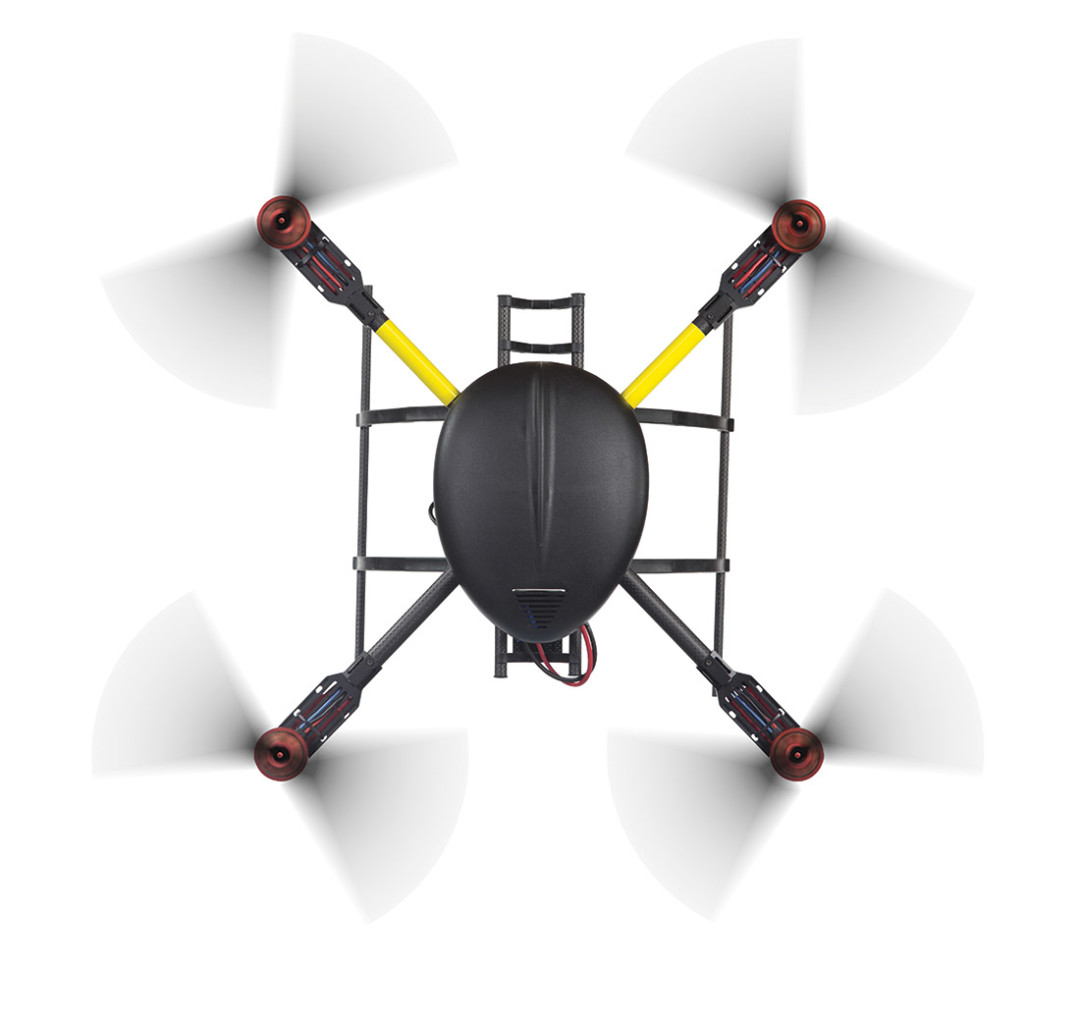They’re Coming

Image: Courtesy Shutterstock
If you haven’t yet seen a drone flying somewhere above Aspen, you’ve probably heard one—a monotonous buzz that brings to mind a mutant bumblebee. For good or ill, drones are having a GoPro moment in mountain sports. They occupy the spot the now-ubiquitous point-of-view video cameras did a decade ago, when GoPros first showed up as curiosities on skiers’ and bikers’ helmets. Helmet cams soon became de rigueur in today’s “pics or it didn’t happen” culture, and drones may very well follow suit.
Camera-mounted copters zoomed above the Buttermilk halfpipe at the X Games and buzzed costumed revelers at Aspen Highlands on closing day. In June, one captured the crowd at Snowmass Mammoth Fest, and several drones hovered below the fireworks on the Fourth of July. But drones have some regulatory hurdles to clear before they descend locust-like over mountain skies. Both personal and commercial drone use is banned on all four Aspen ski areas and at most resorts. (The Aspen Skiing Company made an exception for ESPN to film the X Games; the Highlands closing day drone was unapproved.)
SkiCo is expected to release a more extensive drone policy this summer or fall. Early this year, Aspen city staffers and police met to explore whether there need to be new local laws governing drones. The U.S. Forest Service is working up new guidelines for hobbyists.
Everyone, it seems, is bracing for the coming swarm.
A Colorado state bill that sought to criminalize using drones to photograph people in private places or to monitor their activities stalled in committee this spring. So the only laws on the books regarding drones and privacy are “peeping Tom” invasion-of-privacy laws.
Despite the lack of legal restraints, thus far local incidents have been few. The Aspen-Sopris Ranger District and the Aspen Police Department have none on record. A twenty-year-old man was summonsed in Pitkin County for reckless endangerment in January, having flown a drone at Buttermilk during the X Games, which is within the FAA’s five-mile no-fly zone surrounding the Aspen-Pitkin County Airport. The FAA, which regulates all airspace, did, however, approve ESPN using its drone for commercial use at the competition. (A 2012 act of congress allows the FAA to permit some commercial drone filming by request, while hobbyist use has a wide legal berth: airspace above both private and public land is fair game, including over U.S. Forest Service property, though designated wilderness areas are off-limits. In special use permit areas on Forest Service land, such as Aspen’s ski resorts, the FAA defers to the Forest Service and permit holders, most of whom, thus far, have opted to ban all unmanned aircraft.)
For DJI, the China-based company that makes the popular Phantom 3 ($999) and Inspire 1 ($2,899) camera-mounted quadcopters, business is booming. The company has seen drone sales grow 300 to 500 percent annually since 2009, with sightseeing and mountain sports among DJI’s key markets. Another company, Lily, has begun marketing a new “throw-and-shoot” self-flying camera with images of pro snowboarder Jussi Oksanen in its ads. Resorts can’t hold back the tide, in the drone industry’s view, by outright banning aerial cameras that are going to show up anyway.
“That’s not helpful, because then you don’t have people who are trained to spot them or deal with them,” says DJI spokesperson Michael Perry. “A more exciting model is people who are setting zones, or certain times, when you can fly drones in a specific area.”
Burning Man, for example, this year issued a limited number of drone licenses to Burners to fly and film the annual desert spectacle. This spring, the National Ski Areas Association initiated a rulemaking process with the FAA requesting exemptions for commercial uses, including “drone zones” where ski companies could film guests and sell them the footage—the next permutation of on-mountain photography.
If you’re concerned about these humming eyes in the sky threatening your peace and quiet here in the mountains, for now, your best—if unrealistic—hope is that pilots police themselves and that a drone etiquette takes hold.
“It’s the wild, wild west out here,” says Aspen assistant police chief Bill Linn, “and there are no regulations at all as to what an appropriate use is and what crosses the lines of privacy and safety.”













































